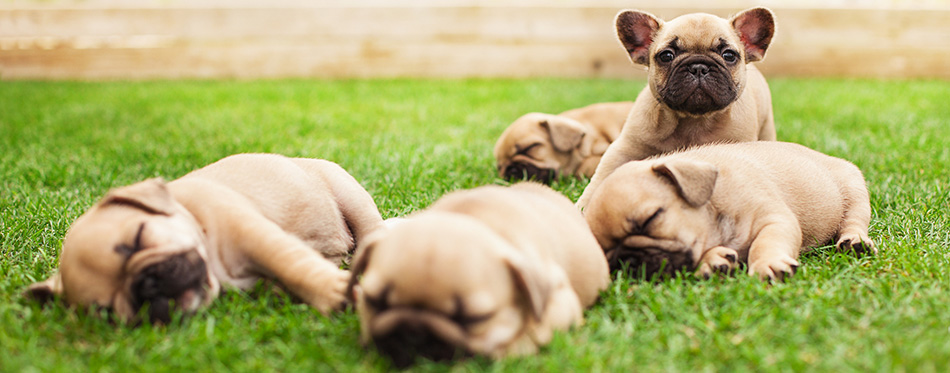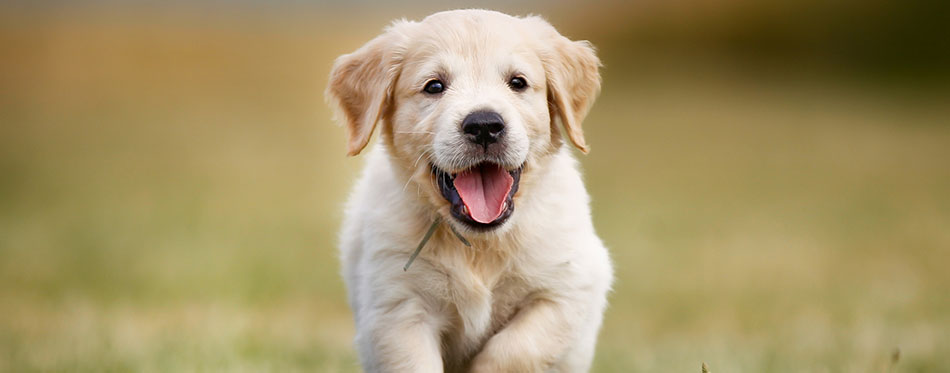Vets always tell us not to overfeed our puppies so that they will grow to their optimum without compromising their development. This is especially the case for large and giant breeds. If they grow too fast, there’s a tendency that the risk for weight-related health problems like hip dysplasia will be increased. That’s why we have to make sure that they grow slow, but sure. The question we know you have in your mind right now is when will your dog stop growing?
A Look at How Puppies Grow
The growth and development of dogs typically follow that of human child development or any other living organism for that matter. Tissues are slowly built one on top of the other to increase in size. This is how muscles and other organs are built. In the case of muscles, the addition of stress on individual muscle cells stimulates the growth of new cells. The stress we are talking about is not the kind that can give us headaches, but rather one that is beneficial to the organism; in this case, mobility or exercise.
When we talk about the growth of dogs or puppies, we always talk about their height. Unfortunately, the way bones grow is quite different from the growth of other tissues. Whereas we can expect muscles to continue growing and developing even when your dog is already old as long as it gets the right physical activities to keep on stimulating muscle development and maintenance, bones don’t enjoy such a luxury.
The growth of bones occurs both laterally (sideways growth that leads to an increase in the diameter and thickness of the bone) and vertically (upward and downward growth that defines the length of the bone). For obvious reasons, the final height or size of your dog will be determined by the length of time it would take for the bone to reach its maximum vertical growth.
Imagine a long bone that starts out as short. On the opposing ends of the bone is the epiphysis. The shaft of the bone or the middle section is the diaphysis. Bone is made up of a blend of minerals and structural proteins.
It starts with bone cells called osteoblasts that form the different matrices needed by the bone. From here, calcium and phosphorus as well as structural proteins are deposited and formed into a very thick and very dense material like cement. Some of these bone cells differentiate into osteocytes to make sure that the bone matrix is continuously developed.
As the puppy moves, stress is added to the bone which further stimulates the activity of osteoblasts and osteocytes. There will also be instances when the bone needs to be remodeled. As such, the osteocytes will become osteoclasts which will break down some of the bone and release its component parts. The osteoblasts will then put these components back again to be maintained by osteocytes.
As bone cells keep depositing minerals into the matrix, the length of the bone keeps on getting longer. Since bone cells can only add new minerals and new structural proteins on softer material, the middle of the bone is already very dense and solid. As such, bone cells and chondrocytes (cells of cartilage tissues) can only deposit new material on both ends of the growing bone.
At the ends of each long bone or the epiphysis is a plate of tissue that is made up of cartilage. This region is called the growth plate or the epiphyseal line. Bone and cartilage cells deposit minerals in this region to form bone tissues. As these harden or calcify, the epiphyseal plate becomes narrower and narrower. If there is no more space within this region and the different cells can no longer deposit new materials that will form the bone tissue, then the bone is said to have reached its maximum length. In other words, it will no longer grow.

Breed-Related Growth Rates
While the growth of dogs is closely related to the linear growth of their bones, they do not proceed at the same rate in almost the same way as different individuals grow at various rates. Generally speaking, smaller breeds grow a lot sooner than their larger cousins.
- Small Breeds
Small and toy dog breeds usually stop growing as soon as they reach 1 year of age, although there are some that can reach their ‘adult’ height within the first 8 months. Not only do they grow faster physically than larger dogs, they also reach emotional and sexual maturity a lot faster.
- Medium Breeds
Dogs like the Rough Collie, Boykin Spaniel, Labrador Retriever, and other medium-sized dogs will typically follow the growth rate of small dogs which is between 8 months and 1 year. However, this is provided you give them the right and well-balanced diet. Otherwise, you can expect them to reach their full maturity a lot sooner or later.
- Large Breeds
Weighing anywhere between 50 and 100 pounds as adults, large breeds typically stop growing by the time they reach 16 months of age. However, it is not unusual that some large hounds can reach their full maturity as early as 10 months. Choosing the right diet is critical at this stage since you really don’t want to accelerate their growth as doing so can put undue strain on their joints.
- Giant Breeds
Saint Bernards, Great Danes, Newfoundlands, and Mastiffs can weigh more than 200 pounds when fully grown. Their growth period is almost the same as large dog breeds at 10 months to 16 months, although there are instances when the dog requires an extra 4 to 8 months before reaching full maturity or before it stops growing altogether. It is often imperative to check with your veterinarian so you will have an idea of the expected age of maturity for the specific breed of giant dog that you have. This will help you determine the best possible care for your dog.

Other Factors that Can Affect a Dog’s Growth
Just because your dog is small or medium or large doesn’t automatically mean that it will stop growing at the ‘prescribed’ age. Unfortunately, it isn’t always the case since there are other factors that can affect the rate of growth of dogs. These are genetics and nutrition.
- Genetics
The way the osteoblasts and chondroblasts deposit materials into the bone matrix is defined by the genes that code for such traits. This should be evident by now as everything about living organisms has been predetermined by how specific nucleotides in the DNA of the organism are arranged.
As such, if you have two large dogs mating you can always expect 100 percent of their offspring to be large as well. This means that they can stop growing by the age of 10 months to 16 months. However, if one parent is slightly larger than the other despite the fact that they are the same breed, there really is no way we can determine when the puppy will stop growing. However, it will be safe to assume that it will still be the same.
Try mating a female Siberian Husky with a male Pomeranian (a mix they call Pomsky) and the height will be very varied. About a quarter of the puppies will have the size of the Siberian Husky while another quarter will be a little closer to the height of the Pomeranian. The remaining half will be somewhere in the middle. Of course, this is oversimplification.
- Nutrition
This should be fairly obvious. The key ingredient for building any body tissue is proteins. When it comes to bones, you also need calcium and phosphorus plus a few other minerals for the other components especially the cartilage. For a wider selection of choices, check out our calcium supplements for dogs guide.
If a puppy is not given the right amounts of high-quality proteins, it may not be able to produce the necessary framework upon which the other elements can be bound. Collagen is especially important since it forms a great part of the extracellular matrix. This is where the calcium and the phosphorus will be enmeshed so that they will form a very hard substance in a process called calcification.
However, it is critical not to overdo it since giving your puppy more proteins and minerals than absolutely necessary can also accelerate its growth. If this happens, the epiphysis or growth plate can close much earlier than usual. If the growth plates close earlier the bone may not have enough time to really harden, making it more vulnerable to the effects of stress. This can lead to brittleness, making it vulnerable to fracture. It can also be a major risk factor for the presentation of hip dysplasia as well as other problems in the dog’s joints. Head over to our review of dog joint supplements for more alternatives.
Find out more about Puppy Food here.
You really would want to give your puppy only the right food for its breed and size if you want it to grow at a normal rate.
When will your puppy stop growing? It depends on its breed characteristics, its genes, and the kind of nutrition that it gets. You won’t be able to do anything with its genes, but you can surely do something about its nutrition.

